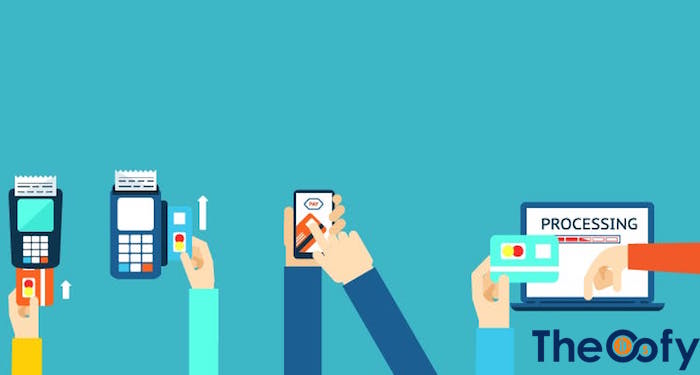E-Commerce sector is one of the growing industries in the market that shows an increasing growth in revenues for more than several years. Buying online is still on the rise even after years after e-commerce was first introduced that companies like Amazon, Shopify and Etsy are representing perfect indicators into the profitability of electronic commerce.
Table of Contents
Owning at Least One E-Commerce Stock
With Amazon showcasing the growth of 18% on sales in the second quarter on YTD charts, this e-commerce giant still remains the leader of the industry, showcasing a stable pace of growth years back.
In the meanwhile, Shopify, another e-commerce gem, is dominating year to year with the latest reports showcasing 62% of growth in revenues with the last quarter’s report, also indicating that e-commerce still represents a healthy industry.
Probably one of the top reasons why e-commerce industry still remains profitable is the fact that online shopping is trending from year to year, still able to attract new customers that are to return to their e-commerce store of choice.
If we add the fact that online shops, unlike the majority of physical retails, offer delivery and ultimate accessibility and availability of products and services 24 hours of the day and 7 days of the week, which is partially the factor driving sales and revenues up in the recent years.
Based on the records from the previous year, not many industries have the same growth potential as e-commerce, as online shopping brought 5 trillion dollars to the US alone in retail sales, while this number was set at 5.7 trillion dollars with bars and restaurants included.
However, there remains the fact that not all companies from the e-commerce industry represent profitable stock issuers, as unlike e-commerce giants and progressive companies such as Amazon, many stocks have little value in the market and are struggling with revenues and profits.
Still, “heavyweight” companies from e-commerce are supporting the industry, making it more profitable than risky.
What is E-commerce? E-commerce Definition
E-commerce, also known as electronic commerce or internet commerce, refers to the buying and selling of goods or services using the internet, and the transfer of money and data to execute these transactions. E-commerce is often used to refer to the sale of physical products online, but it can also describe any kind of commercial transaction that is facilitated through the internet.
Whereas e-business refers to all aspects of operating an online business, e-commerce refers specifically to the transaction of goods and services.
The history of e-commerce begins with the first ever online sale: on August 11, 1994, a man sold a CD by the band Sting to his friend through his website NetMarket, an American retail platform. This is the first example of a consumer purchasing a product from business through the World Wide Web—or “e-commerce” as we commonly know it today.
Since then, e-commerce has evolved to make products easier to discover and purchase through online retailers and marketplaces. Independent freelancers, small businesses, and large corporations have all benefited from e-commerce, which enables them to sell their goods and services at a scale that was not possible with traditional offline retail.
Global retail e-commerce sales are projected to reach $27 trillion by 2020.
Types of E-commerce Models
There are four main types of e-commerce models that can describe almost every transaction that takes place between consumers and businesses.
- Business to Consumer (B2C):
When a business sells a good or service to an individual consumer (e.g. You buy a pair of shoes from an online retailer). -
Business to Business (B2B):
When a business sells a good or service to another business (e.g. A business sells software-as-a-service for other businesses to use) -
Consumer to Consumer (C2C):
When a consumer sells a good or service to another consumer (e.g. You sell your old furniture on eBay to another consumer). -
Consumer to Business (C2B):
When a consumer sells their own products or services to a business or organization (e.g. An influencer offers exposure to their online audience in exchange for a fee, or a photographer licenses their photo for a business to use).
Examples of E-commerce
E-commerce can take on a variety of forms involving different transactional relationships between businesses and consumers, as well as different objects being exchanged as part of these transactions.
- Retail:
The sale of a product by business directly to a customer without any intermediary. -
Wholesale:
The sale of products in bulk, often to a retailer that then sells them directly to consumers. -
Dropshipping:
The sale of a product, which is manufactured and shipped to the consumer by a third party. -
Crowdfunding:
The collection of money from consumers in advance of a product being available in order to raise the startup capital necessary to bring it to market. -
Subscription:
The automatic recurring purchase of a product or service on a regular basis until the subscriber chooses to cancel. -
Physical products:
Any tangible good that requires inventory to be replenished and orders to be physically shipped to customers as sales are made. -
Digital products:
Downloadable digital goods, templates, and courses, or media that must be purchased for consumption or licensed for use. -
Services:
A skill or set of skills provided in exchange for compensation. The service provider’s time can be purchased for a fee.
Find all Investment Management, KIBO Commerce, Chamber of Commerce News in TheOofy.com.




